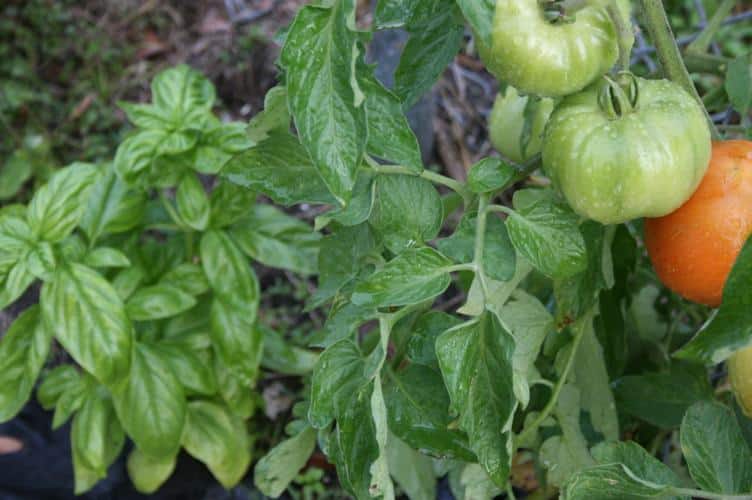Gardening is more than just planting seeds and hoping for the best. If you want a healthier, more productive garden, it’s time to consider companion planting. This age-old technique involves pairing plants that help each other thrive, whether by deterring pests, improving soil health, or enhancing growth.
Many gardeners rely on pesticides and fertilizers to protect their plants, but companion planting offers a natural, chemical-free alternative. By strategically placing certain plants together, you can create a more balanced, resilient garden that practically takes care of itself.
If you’re looking to maximize your harvest while minimizing maintenance, here’s everything you need to know about companion planting and how it can transform your garden.
What Is Companion Planting and Why Does It Work?
Companion planting is based on the idea that certain plants work better together. Some plants release natural chemicals that repel harmful insects, while others improve soil quality or attract beneficial pollinators. The right combinations can even enhance flavor and growth, making your vegetables, herbs, and flowers healthier and more productive.
There are three main ways companion planting benefits your garden:
- Pest Control: Some plants naturally repel insects that feed on your crops. Others attract predatory insects like ladybugs that keep pests in check.
- Soil Improvement: Certain plants fix nitrogen in the soil, making it richer and more fertile for neighboring crops. Others help prevent soil erosion or act as living mulch.
- Growth Enhancement: Some plants provide shade, wind protection, or structural support for others, creating a more stable microclimate for growth.
The key is knowing which plants work well together and which ones to avoid pairing.

Best Combinations for a Thriving Garden
Not all plants get along, but some pairings can dramatically improve your garden’s health. Here are some of the best companion planting matches to try.
1. Tomatoes and Basil
Basil isn’t just great for cooking—it’s a powerful companion plant for tomatoes. The strong scent of basil repels pests like aphids and tomato hornworms, keeping your tomato plants safe. In return, tomatoes provide a bit of shade, helping basil thrive in hot weather. Some gardeners even claim that basil enhances the flavor of tomatoes.
Avoid: Don’t plant tomatoes near cabbage, as they compete for nutrients and can stunt each other’s growth.
2. Carrots and Onions
Carrots attract pests like carrot flies, but onions act as a natural repellent due to their strong smell. In return, carrots loosen up the soil, making it easier for onions to develop deep roots. This combination leads to healthier, better-formed crops with minimal pest interference.
Avoid: Carrots shouldn’t be planted near dill, as dill can stunt carrot growth.
3. Corn, Beans, and Squash (The “Three Sisters” Method)
This ancient Native American technique uses three plants that support each other in a natural cycle. Corn provides a sturdy structure for beans to climb, beans fix nitrogen into the soil, and squash shades the ground, preventing weeds and moisture loss. Together, they create a self-sustaining ecosystem with little need for extra fertilizer or watering.
Avoid: Keep corn away from tomatoes, as they attract similar pests.
4. Lettuce and Radishes
Lettuce and radishes make a great team because radishes grow quickly and break up compacted soil, making it easier for lettuce roots to spread. Radishes also deter leaf-chewing pests, giving lettuce a better chance to thrive.
Avoid: Keep lettuce away from broccoli and cabbage, as they compete for the same nutrients.
5. Cucumbers and Nasturtiums
Nasturtiums are one of the best companion plants for cucumbers because they repel aphids, beetles, and whiteflies while attracting pollinators. Their spreading vines act as natural mulch, keeping the soil cool and retaining moisture for cucumber plants.
Avoid: Don’t plant cucumbers near potatoes, as they attract similar diseases.

Plants That Should Never Be Planted Together
Just as some plants support each other, others can harm each other’s growth. Here are a few bad companion planting combinations to avoid:
- Tomatoes and Potatoes – Both attract the same diseases, making them vulnerable to blight.
- Carrots and Dill – Dill can stunt carrot growth and reduce yield.
- Beans and Onions – Onions release chemicals that can slow down bean growth.
- Cabbage and Strawberries – They compete for nutrients and space, leading to poor growth.
Avoiding these bad combinations ensures your plants don’t work against each other.
How to Plan Your Companion Planting Layout
To get started with companion planting, take a look at your available space and crops. Here’s a simple approach to designing your companion planting layout:
- List the plants you want to grow and group them based on compatibility.
- Use taller plants for shade – Corn, sunflowers, and pole beans can provide shade for heat-sensitive crops.
- Place pest-repelling plants near vulnerable crops – Herbs like basil, thyme, and chives can protect vegetables from insects.
- Rotate crops each season to keep the soil healthy and avoid disease buildup.
- Experiment and observe – Every garden is different, so track what works and adjust your combinations as needed.
A little planning goes a long way in creating a self-sustaining, thriving garden.
Companion planting is a simple yet powerful way to improve your garden’s health, productivity, and resilience. By pairing the right plants together, you’ll not only reduce pests and improve soil quality but also create a balanced ecosystem that requires less effort to maintain.
Start small by testing one or two companion planting combinations in your garden. Over time, you’ll discover what works best for your specific climate and soil conditions. The more you experiment, the more your garden will thrive naturally—without the need for chemical pesticides or fertilizers.
If you’re looking for more gardening tips and tricks, be sure to check out our Gardening category for more ways to make your outdoor space bloom!











